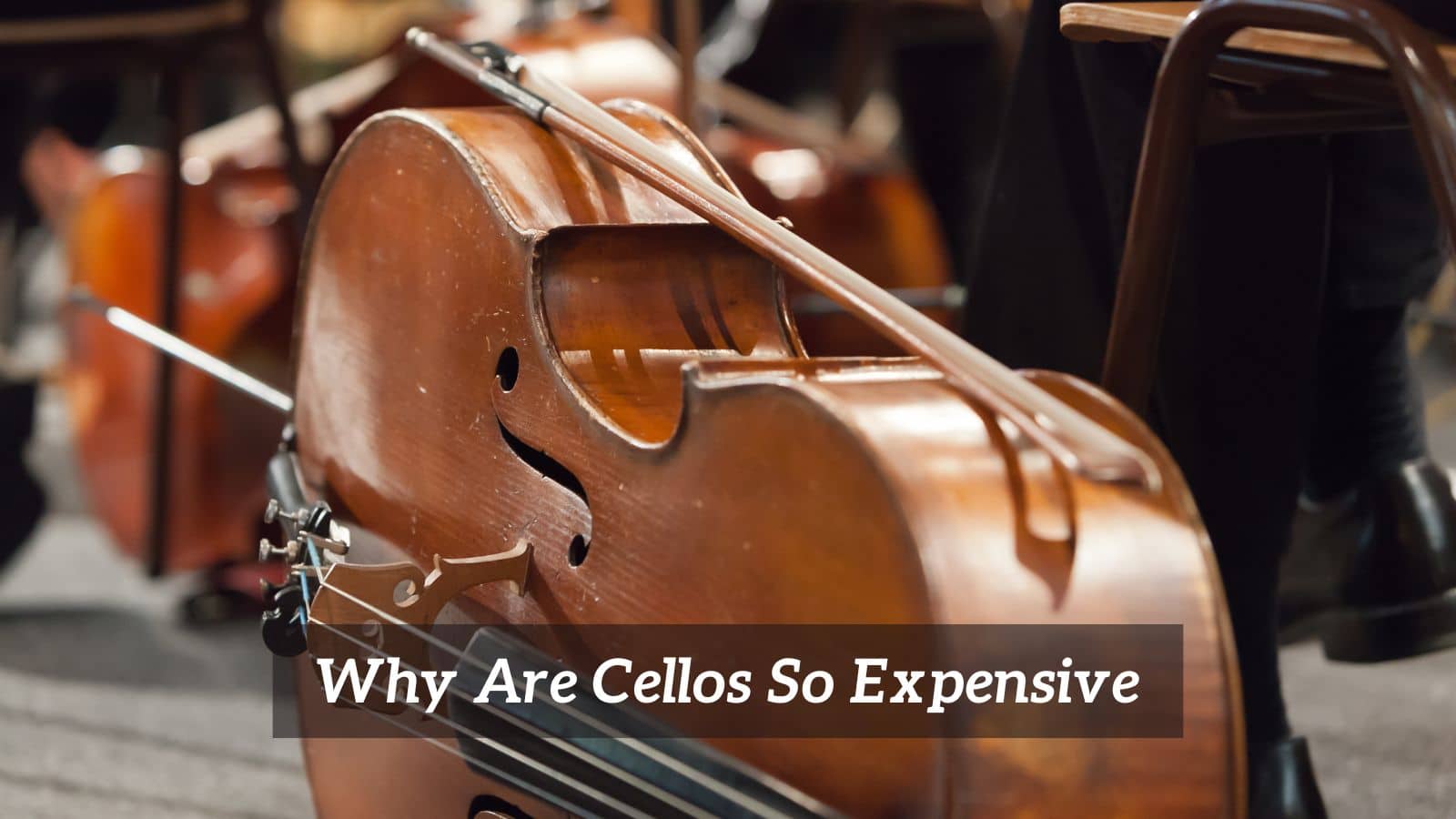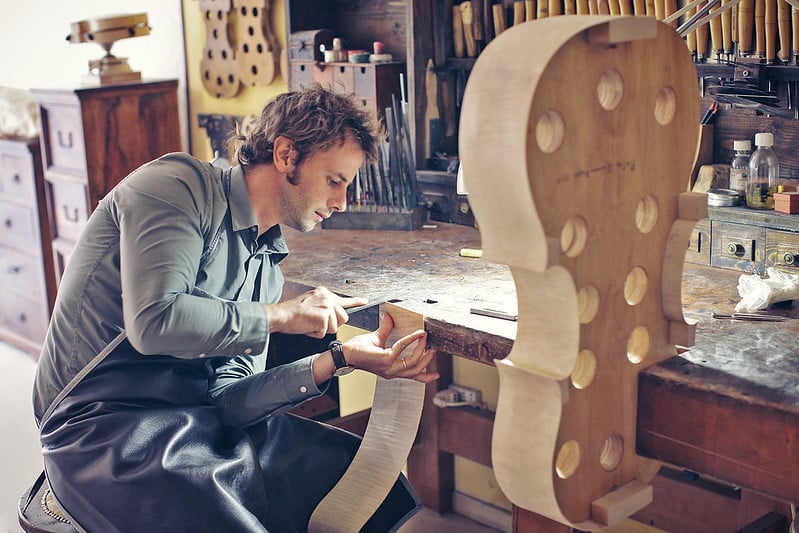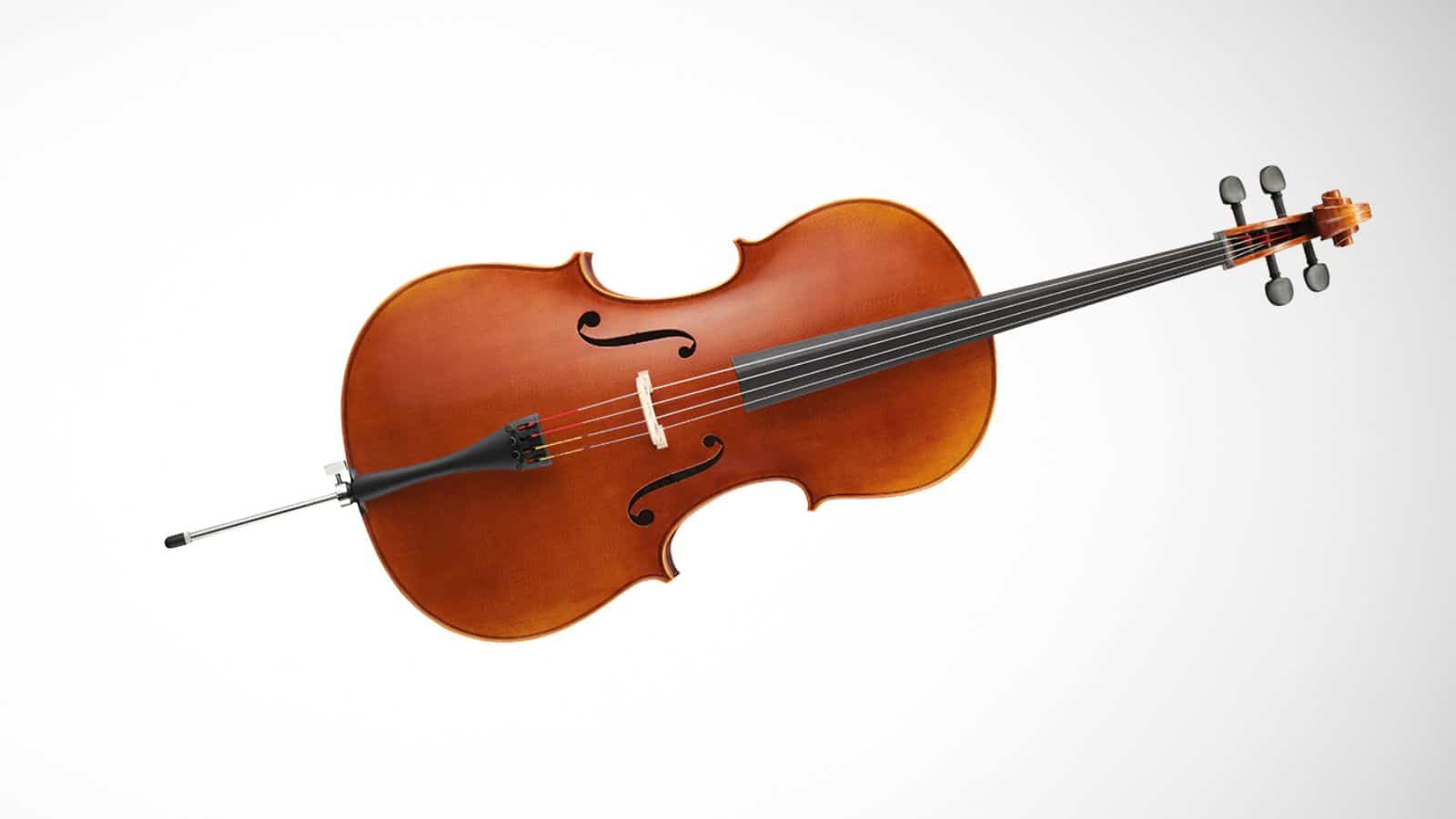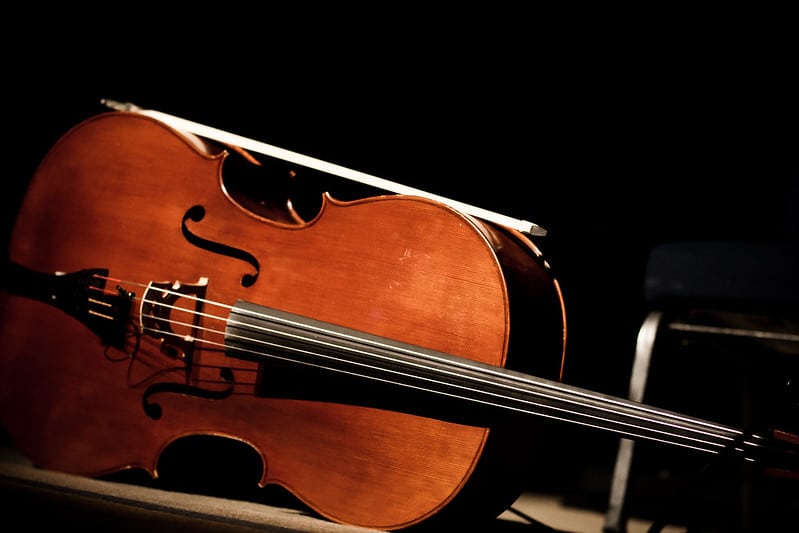
The manufacturing of any instrument from the humble recorder to the church organ is a complex process that requires the skill of many people. Numerous factors go into the creation of an instrument.
Selecting the right wood or metal, using the correct tools, making joints, sourcing padding material and cork and others besides. The cello might give the impression of a simple-looking instrument, but this is merely a ruse.
Why Are Cellos So Expensive?
At its simplest, the cello is a shapely box with an extended wooden arm to which some strings are attached to its end. A bow creates a sound when it is drawn across the strings.
When framed in this language, it is understandable that you might not consider paying a million dollars for one reason, but at the heart of a cello is a story of craftsmanship, precise detail and love.
The history of the cello is fascinating and provides a window into how the instrument is made and why some are incredibly expensive.
Like the violin, the cello began to emerge from the dusty workshops of Amati, Maggini and De Salo. These Italian craftsmen were working towards the end of the Renaissance on instruments were bass violins.
They were nicknamed the violone. This word essentially means big viola. As a time guide, Claudio Monteverdi employed the bass violin in Orfeo (1607).
What spurred the full development of the cello was the invention of stings that were not the traditional gut strings, but strings made of wound wire. This technical leap significantly helped instrument makers develop the cello.
Traditionally, cellos are hand-carved from hardwood such as spruce or maple. These woods are not a cheap option today and often beginner models are constructed from laminated wood.
This provides a durable and far less expensive instrument for beginners. The creation of the cello’s distinctive curves is a skilled job as the wood needs to be heated to an exact temperature for it to be able to bend into the desired shape.
Inside the body of the cello is a bass bar that supports from underneath the bridge. This piece of wood acts as a transmitter of the sound and tension support.
There is also a sound post. This takes some of the tension too and is positioned just under the right foot of the bridge. It promotes the sound vibrations towards the front of the cello.
The majestic neck of the cello is commonly carved from a single piece of wood. On this is placed a high-quality piece of ebony to act as the fingerboard. Tuning pegs are usually made of ebony too as the wood is both strong and aesthetically pleasing.
This is a snapshot of the cello and its parts. What you are looking at for hand-made cellos is around 300 hours of labour to create the instrument.
When you add in the time it takes for joints to glue and set together as well as the creation of moulds and templates, it’s considerably over the figure above.
There is the varnishing of the cello to add to the hours spent as well as the creation of the bow. (Incidentally, the name often used to describe a maker of cellos is derived from the French word for lute and becomes a luthier).
It is very easy to make a mistake or error of judgement when making such a delicate instrument. Even though these days cellos are mass-produced using machines, the expensive cellos for professional players are crafted by hand.
Here is where a good deal of the expense comes from. If you look at the budget end of the cello market, you can pay very little to buy a new instrument.
Cremona cellos for instance begin at around £500 and come with a raft of guarantees and standards for the beginner. On the Caswells site, there are many cellos listed that provide a solid guide to price ranges.
At the less expensive end of the range, the Andreas Zeller solid back cello is priced at £1415, whereas a Heritage Amati creeps up towards £4000. Towards the top of their selection comes the Yamaha VC20G at £5000 and the Wessex XVI Series at £5695.
These figures are a drop in the ocean when you stretch upwards towards the professional instruments. One key element here is that many of these cellos are old, very old and therefore extremely rare.
They have been made centuries ago by some of the first makers of the cello with such levels of skill and ingenuity that they have never been equalled.
Antonio Stradivari you probably know is famous for making violins but he also created 63 cellos. Commanding an eye-watering figure of $20 million, the Duport Stradivarius is probably the world’s most expensive cello. It is owned by the Nippon Music Foundation.
The famous violin virtuoso violinist Nicolo Paganini owned a cello that eventually came to bear his name alongside the cello’s creator, Stradivari.
This instrument has over the years been passed through some of the greatest players of the ages. Reportedly in the early 1800s, it was rescued from being taken to the tip and is now worth a cool $6 million.
If you are looking for a lower price tag then perhaps the Giovanni Guadnini Cello will be more to your liking at a mere $1.5 million.
Made in 1787 and I believe now owned by the United States Air Force, this beautiful cello sold for only $75,000 which hard on the heels of the Stradivari seems such a slight amount to pay for such a historical instrument.
Cellos are particularly difficult instruments to make. The techniques involved in their manufacture together with the cost of materials and labour raise the cost of the cello higher than many other instruments.
When the professional instruments are crafted then the stakes are even higher with hand-selected woods, and no detail is spared in the exact production of the cello.
Finally, those cellos that have travelled through centuries of time to be with us today are naturally going to attract colossal prices.
Ultimately, the cello is an instrument that many liken to as close to the human voice as is possible. This not only makes the instrument enthralling to learn but also one to adore listening to.




Fascinating. Inspires me to get back to practicing my own, old cello. Despite a few cracks, tt still sounds wonderful to me.
Very useful and instructive. Please keep it going!